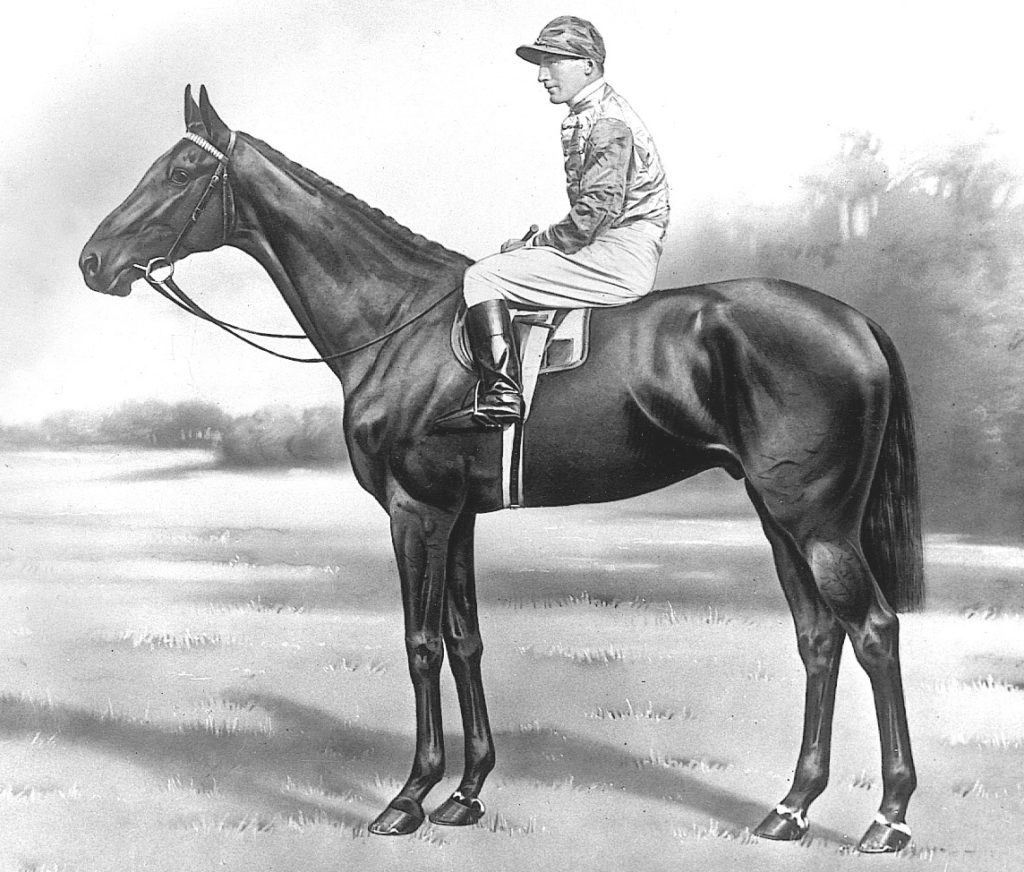BAHRAM’S TRIPLE CROWN
Bahram’s Derby victory in 1935 entitled him to become “Derby Winner of the Decade”, however, the stories surrounding his Triple Crown victories have largely been forgotten. This brief account, therefore, aims to bring to life the achievement of one of the greatest horses of the 20th century.
Trained by Frank Butters at Newmarket, Bahram is only the second horse to win the Triple Crown and remain unbeaten – Ormonde being the first in 1886. He was also the second of five Derby winners owned by the Aga Khan III, who, at the time, said he would never sell his Triple Crown winner, but he did, and despite criticism from British breeders, he also sold the other four – Blenheim, Mahmoud, My Love and Tulyar.
A handsome, well proportioned, bay colt of 16.2 hands, with a 69 inch girth, Bahram, had an impressive pedigree – his sire, Blandford was to be Champion Sire three times, siring four Derby winners in seven years, while his dam, Friar’s Daughter, had previously produced Dastur (by Solario), second in each leg of the 1932 Triple Crown and winner of the Irish Derby.
Bahram’s first race was the National Breeders’ Produce Stakes at Sandown, for which his stable companion Theft was preferred. The pair dominated the finish, Bahram winning by a neck at odds of 20-1. He then ran up victories in the Rous Memorial Stakes at Goodwood, the Gimcrack Stakes at York, the Boscawen (Post) Stakes and the Middle Park Stakes at Newmarket, starting odds-on each time.
At the end of the season he was the top-rated two-year-old in the Free Handicap with 9st 7lb, one pound higher than Hairan and Theft – all three colts were owned by the Aga Khan.
Mobiles view landscape
THE TWO THOUSAND GUINEAS
Wednesday, 1 May 1935 Two Thousand Guineas Stakes Newmarket
________________________________________________________________________
3-year-olds, colts and fillies.
Rowley Mile.
1 Bahram 9st 0lb F Fox 7-2
2 Theft 9st 0lb G Richards 11-2
3 Sea Bequest 9st 0lb E Smith 100-7
Won by 1½ lengths, 2 lengths. 16 ran.
________________________________________________________________________
After receiving a slight setback, Bahram made his reappearance in the Two Thousand Guineas, where questions of his fitness caused him to drift in the betting from 5-2 to 7-2. This in the face of strong support for Lord Derby’s Richmond Stakes winner Bobsleigh, whose impressive home gallops sent his price from 100-30 to 7-4 favourite.
Entering the Dip, Theft held a narrow lead from Bahram, with Sea Bequest, Apollo and Bobsleigh close behind. On meeting the rising ground, Bahram quickly took the measure of Theft and went away to beat him by one and a half lengths with Sea Bequest a further two lengths away third.
THE DERBY
Wednesday, 5 June 1935 Derby Stakes Epsom Downs
_________________________________________________________________________
3-year-olds, colts and fillies.
1 mile 4 furlongs 5 yards.
1 Bahram 9st 0lb F Fox 5-4 Fav
2 Robin Goodfellow 9st 0lb T Weston 50-1
3 Field Trial 9st 0lb R Dick 9-1
Won by 2 lengths, ½ length. 16 ran.
_________________________________________________________________________
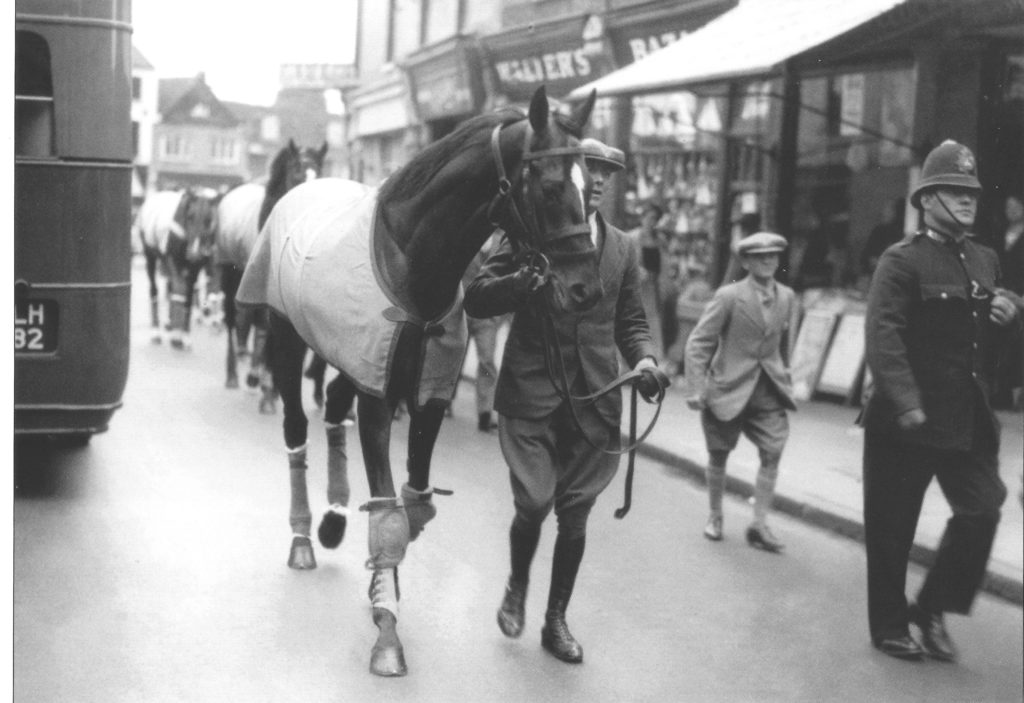
BAHRAM walking along Epsom High Street to the Derby.
After heavy rain in the morning, the sun came out to restore the going to good. Sixteen runners went to post, with Bahram clear favourite at 5-4. The Aga Khan, also ran both Theft, and the second favourite, Hairan. All in vein, however, as it was to be Bahram’s day.
Approaching the top of the hill, First Son took them along from Pry, Sea Bequest and Field Trial. Behind them, Theft, ridden by Harry Wragg, was well placed on the rails, however, Freddie Fox on Bahram was trapped in a pocket behind him. Feeling the frustration, Fox shouted to Wragg, on the Aga’s third string, to pull over; Wragg duly obliged and Bahram shot through the gap.
Descending to Tattenham Corner, Field Trial forged ahead of First Son and Pry, with Bahram in pursuit. The order was maintained into the straight, but by the two-furlong marker, Fox had Bahram poised just behind Field Trial, and letting him go at the distance, gained a comfortable two-length victory from the running-on Robin Goodfellow.
In the post-race press interviews, Harry Wragg, on Theft, said, “I had a lovely position going up the hill. I had intended to go along just behind the leaders and not wait as so many people thought I would do. Before we reached the top of the hill I heard somebody shout; I had to glance over my shoulder and found that it was Freddie Fox trying to squeeze through. There was not room for him to do so, but when I realized it was Bahram, and I was also riding for the Aga Khan, I gave way and he was able to take a position which might have been mine”.
After the race Wragg was cautioned by the stewards regarding his riding of Theft. They drew his attention to Rule 139, which stated: ”Every horse that runs in a race shall be run on its merit, whether his owner runs another horse in the race or not”. Wragg was then warned that any repetition of his ride would be severely dealt with.
Two weeks later, Bahram went to Ascot, winning the St James’s Palace Stakes – five went to post and starting at 1-8, he beat Portfolio and Rosecrag by one length and four lengths.
THE ST LEGER
Wednesday, 11 September 1935 St Leger Stakes Doncaster
__________________________________________________________________________
3-year-olds, colts and fillies.
1 mile 6 furlongs 132 yards.
1 Bahram 9st 0lb C Smirke 4-11 Fav
2 Solar Ray 9st 0lb J Sirett 100-6
3 Buckleigh 9st 0lb H Wragg 25-1
Won by 5 lengths, 3 lengths. 8 ran.
__________________________________________________________________________
In the St Leger, Charlie Smirke took the ride on Bahram, Fox, having incurred serious head injuries from a fall at Doncaster the day before.
Starting the 4-11 favourite, Smirke gave Bahram his head two furlongs out and cruised to the front from Field Trial, Fairburn and Solar Ray. Field Day faded a furlong out, allowing Solar Ray and Buckleigh to run into the places. Although Bahram’s official winning distance was five lengths, photographs show it was nearer ten.
An exuberant Charlie Smirke said “He could have won with 12 stone and two men on his back!” Meanwhile, Freddie Fox had listened to the race on the radio in a Doncaster nursing home. The Aga Khan, as a sporting gesture, sent both Smirke and Fox £1,000 – worth more than £50,000 today.
In the absence of the Aga, Bahram was led in to a noisy and triumphant reception by a strangely subdued Aly Khan, possibly troubled by the breaking news scandal of his affair with Joan Barbara Guinness. Aly, named in the subsequent divorce, paid the costs, then married Joan soon after.
In 1936, Bahram retired to stud to become the sire of:
TURKHAN b.c.1937, won Irish Derby, Yorkshire St Leger (St Leger Substitute), second in New Derby Stakes.
BIG GAME br.c. 1939, won New Two Thousand Guineas Stakes, sire of QUEENPOT b.f. 1945, won One Thousand Guineas Stakes & AMBIGUITY b.f. 1950, won Oaks Stakes.
MAH IRAN gr.f. 1939, won 5 races and bred MIGOLI gr.c. 1944 by BOIS ROUSSEL, won Eclipse Stakes, Champion Stakes, Prix de l’Arc de Triomphe, second in Derby Stakes.
PERSIAN GULF b.c. 1940, won Coronation Cup, sire of ZABARA ch.f. 1949, won One Thousand Guineas Stakes & PARTHIA br.c. 1956, won Derby Stakes.
In 1940, the Aga Khan sold Bahram to a syndicate of American breeders for £40,000 and although the sale was deplored by British breeders, he travelled by boat to America in August that year. After a perilous sea voyage, Bahram took time to recover before standing in Maryland at Alfred G. Vanderbilt’s Sagamore Stud the following year – he was not a great success.
In 1946, Bahram was exported to Argentina, where he sired SENEGAL b.c. 1953, twice winner of the Clasico Simon Bolivar over one mile, four furlongs at La Rinconada in Caracus, Venezuela.
Bahram, unbeaten Triple Crown winner, died on 24 January 1956, aged 24.
******************************************************************************
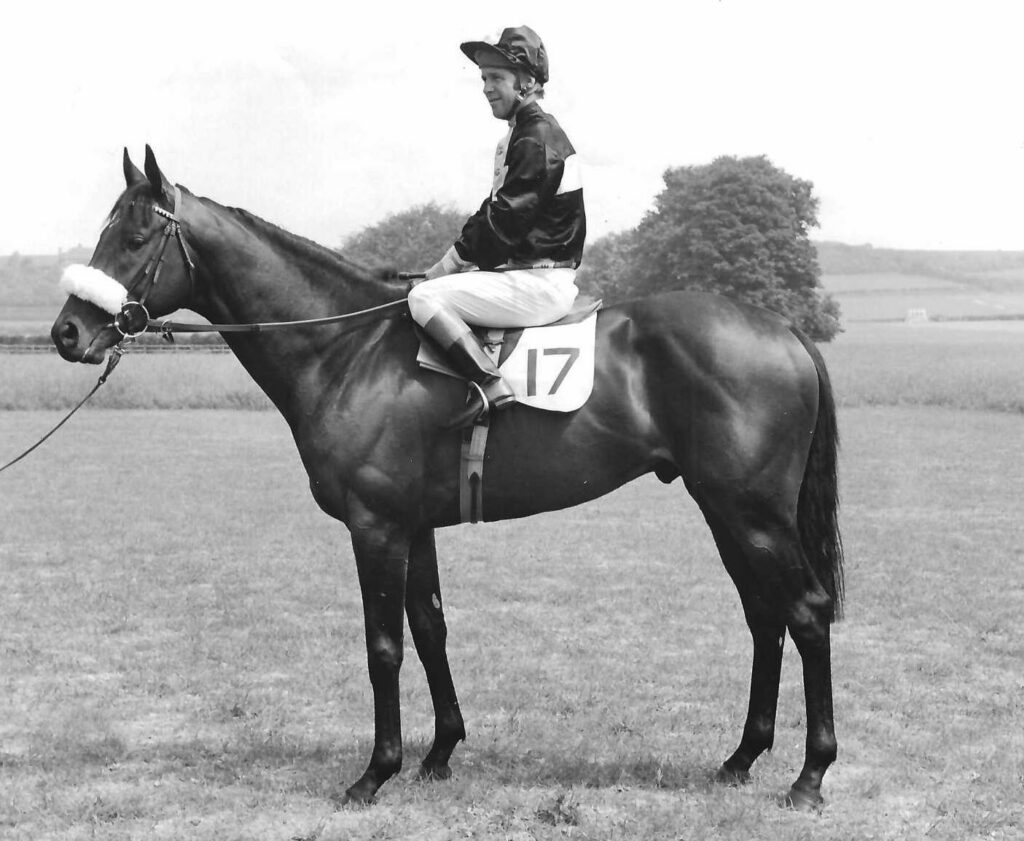
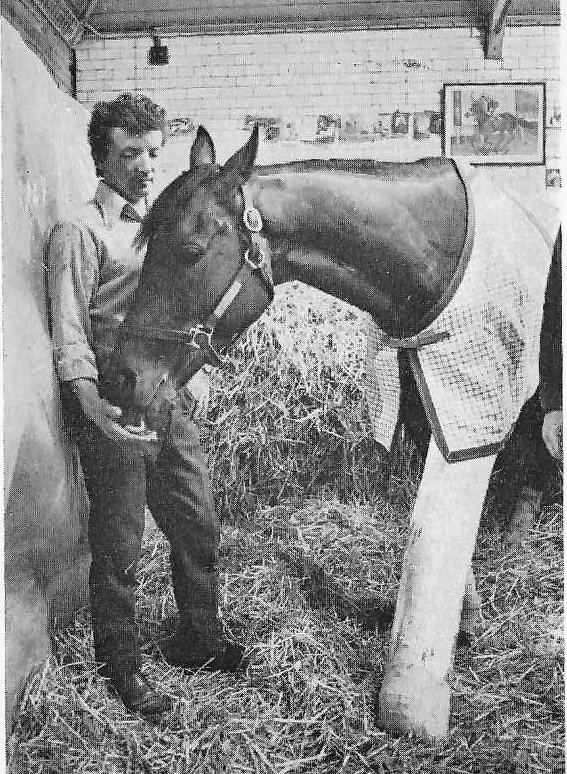
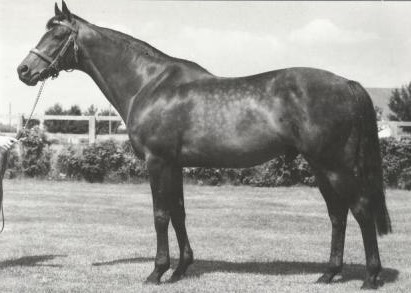
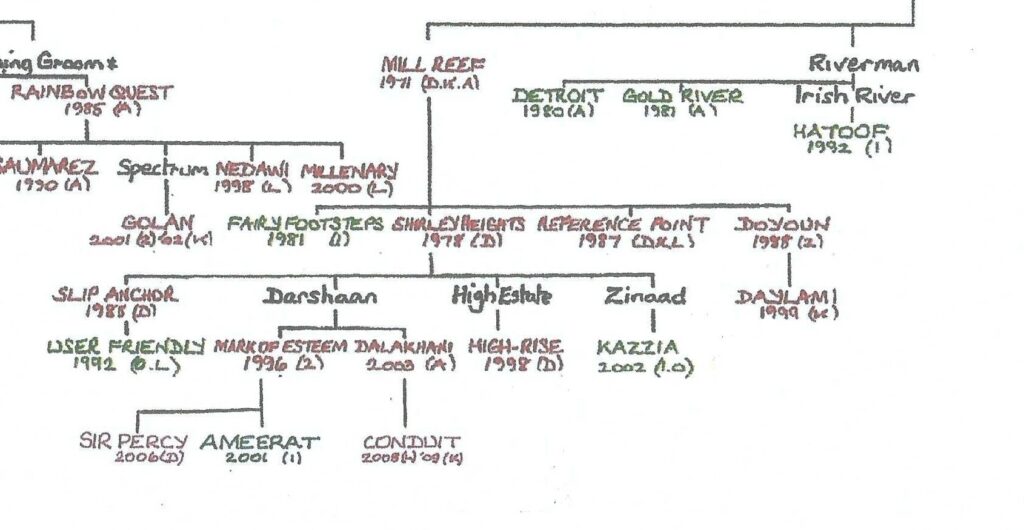

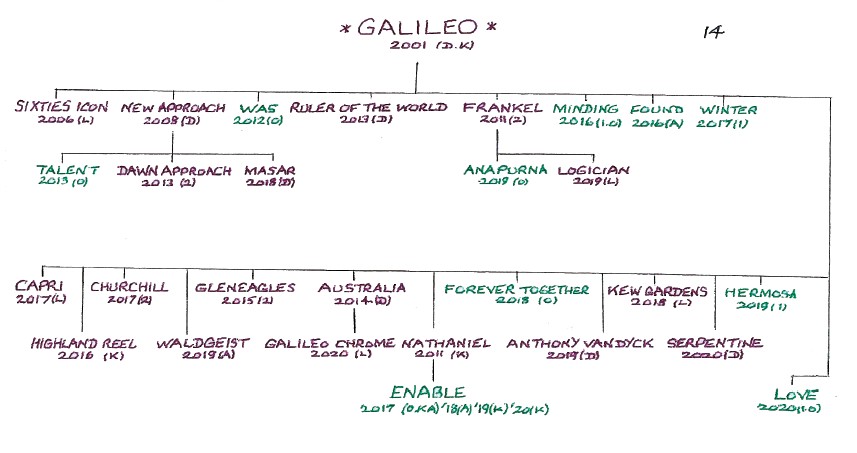
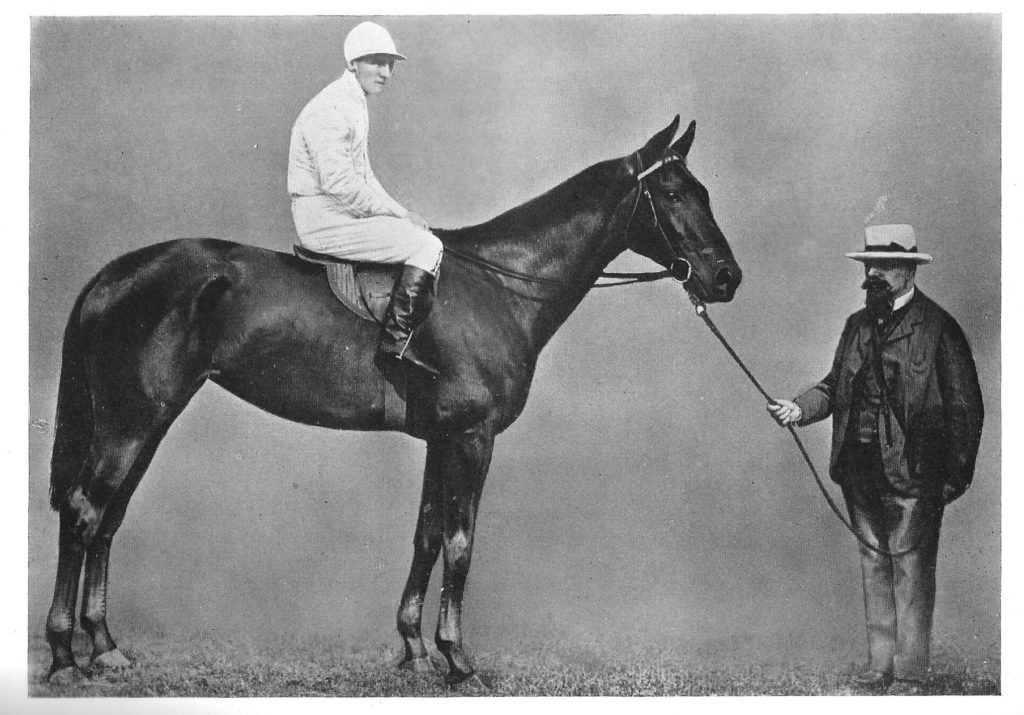
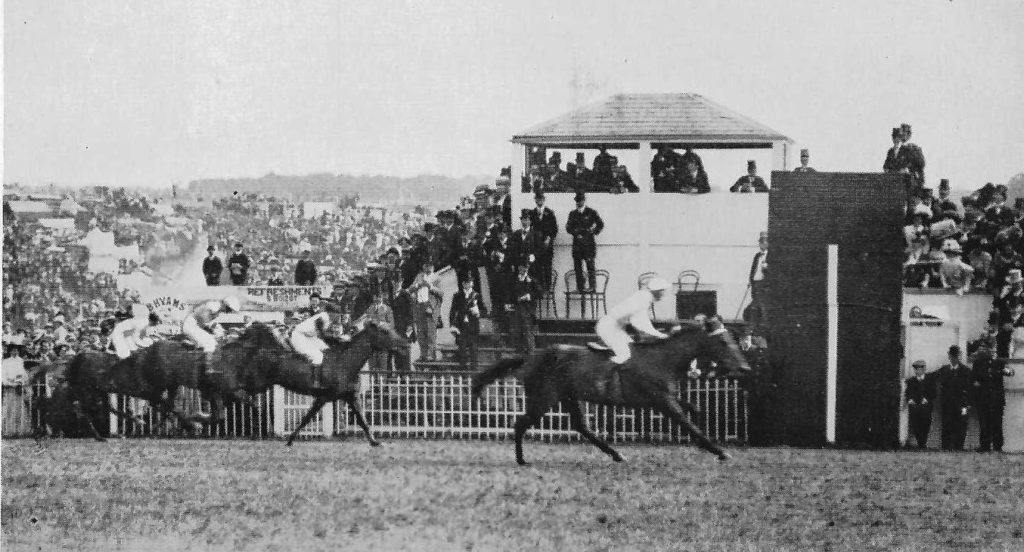
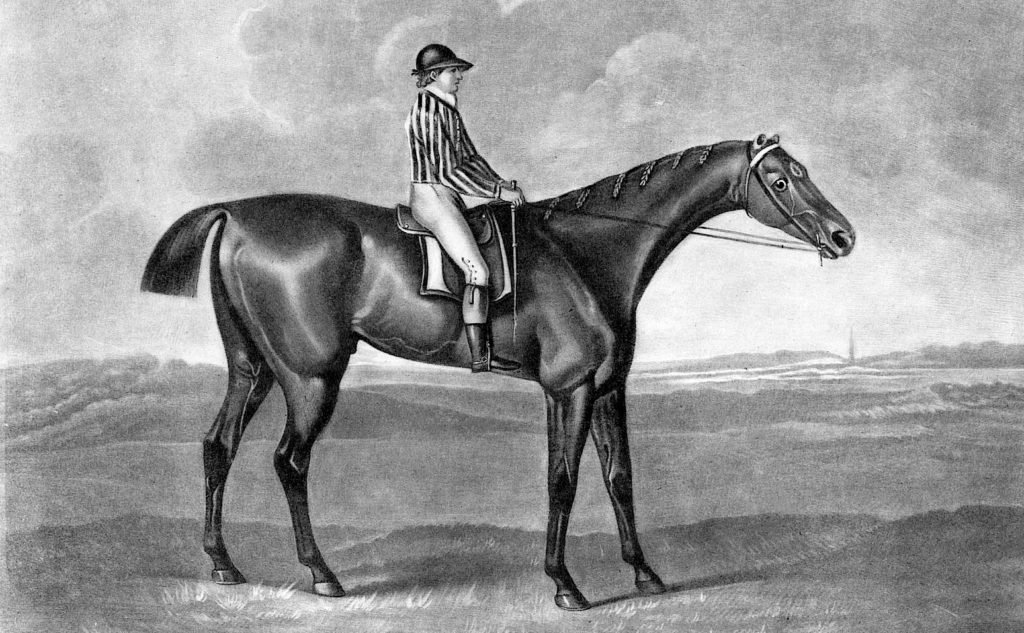
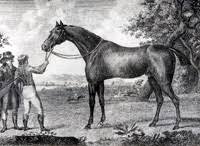 The next day, against similar opposition, Escape, carried 8 st 13 lb, over an extended 4 miles (Beacon Course), and completely reversed the form to win at odds of 5-1. There followed, accusations that Chifney had pulled Escape the first time to get better odds the next day. Some, even suggesting that the Prince was in on the plan. One rumour that flourished, however, was, that two rouges of the ring, fearing the follow up money for Escape, had seen to it that he was over fed on the morning of the race.
The next day, against similar opposition, Escape, carried 8 st 13 lb, over an extended 4 miles (Beacon Course), and completely reversed the form to win at odds of 5-1. There followed, accusations that Chifney had pulled Escape the first time to get better odds the next day. Some, even suggesting that the Prince was in on the plan. One rumour that flourished, however, was, that two rouges of the ring, fearing the follow up money for Escape, had seen to it that he was over fed on the morning of the race.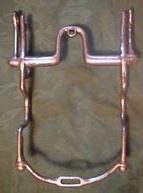
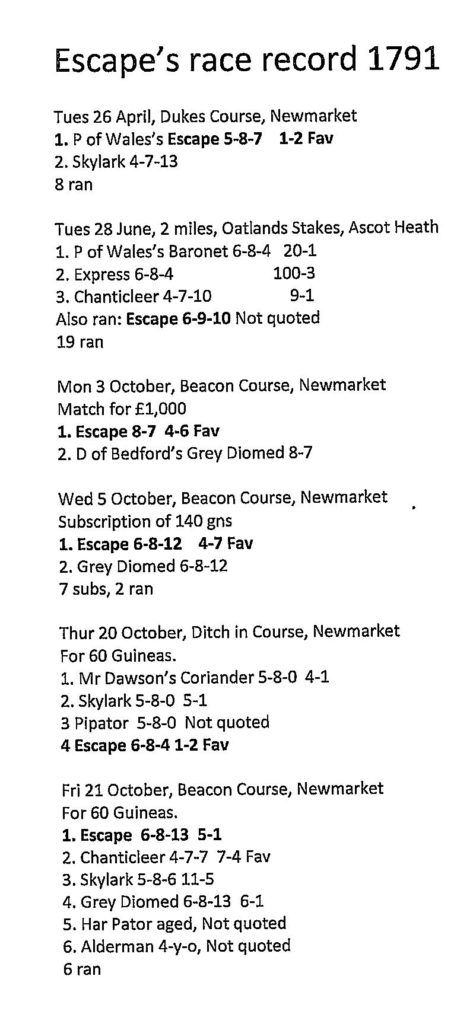
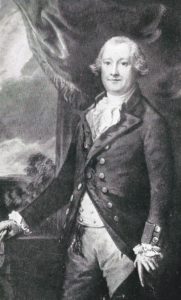 Edward Smith-Stanley, 12th Earl of Derby (1752-1834), on becoming of age, bought a country house, at Woodmansterne, near Epsom, called ‘The Oaks’, from his uncle by marriage, General John Burgoyne. For the Epsom May Meeting in 1778, Lord Derby, a steward, invited a party of friends to his house, where it was proposed that the following year, a single race over one and a half miles for three-year-old fillies would add some spice to the meeting. The race was named after Lord Derby’s house and appropriately, won by his filly, Bridget. The event was considered a great success and as a result, another new race was proposed, this for both colts and fillies, to be run over a mile the following year – but what to call it – “The Bunbury” or “The Derby” – they tossed a coin and, “Heads it is, so it’s The Derby – The Derby Stakes.”
Edward Smith-Stanley, 12th Earl of Derby (1752-1834), on becoming of age, bought a country house, at Woodmansterne, near Epsom, called ‘The Oaks’, from his uncle by marriage, General John Burgoyne. For the Epsom May Meeting in 1778, Lord Derby, a steward, invited a party of friends to his house, where it was proposed that the following year, a single race over one and a half miles for three-year-old fillies would add some spice to the meeting. The race was named after Lord Derby’s house and appropriately, won by his filly, Bridget. The event was considered a great success and as a result, another new race was proposed, this for both colts and fillies, to be run over a mile the following year – but what to call it – “The Bunbury” or “The Derby” – they tossed a coin and, “Heads it is, so it’s The Derby – The Derby Stakes.”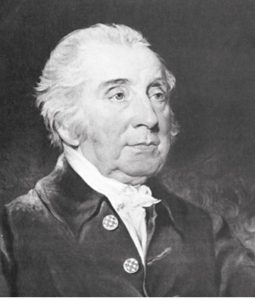 Sir Thomas Charles Bunbury (1740-1821), was the son of a vicar at Great Barton, near Newmarket. He was elected a Whig MP for Mildenhall, Suffolk, at the age of 21 and became a strong opponent of the slave trade. He was the first outstanding member of the Jockey Club and became a senior Steward at the age of 28, thereafter taking the role of ‘perpetual president’. However, like the Earl of Derby, he too was subject to a scandal. After his marriage to the notorious Lady Sarah Lennox in 1762, she had an affair with Lord William Gordon, giving birth to his daughter. The couple eloped taking the child with them, but when Lord William abandoned her, Sir Charles refused to take her back.
Sir Thomas Charles Bunbury (1740-1821), was the son of a vicar at Great Barton, near Newmarket. He was elected a Whig MP for Mildenhall, Suffolk, at the age of 21 and became a strong opponent of the slave trade. He was the first outstanding member of the Jockey Club and became a senior Steward at the age of 28, thereafter taking the role of ‘perpetual president’. However, like the Earl of Derby, he too was subject to a scandal. After his marriage to the notorious Lady Sarah Lennox in 1762, she had an affair with Lord William Gordon, giving birth to his daughter. The couple eloped taking the child with them, but when Lord William abandoned her, Sir Charles refused to take her back.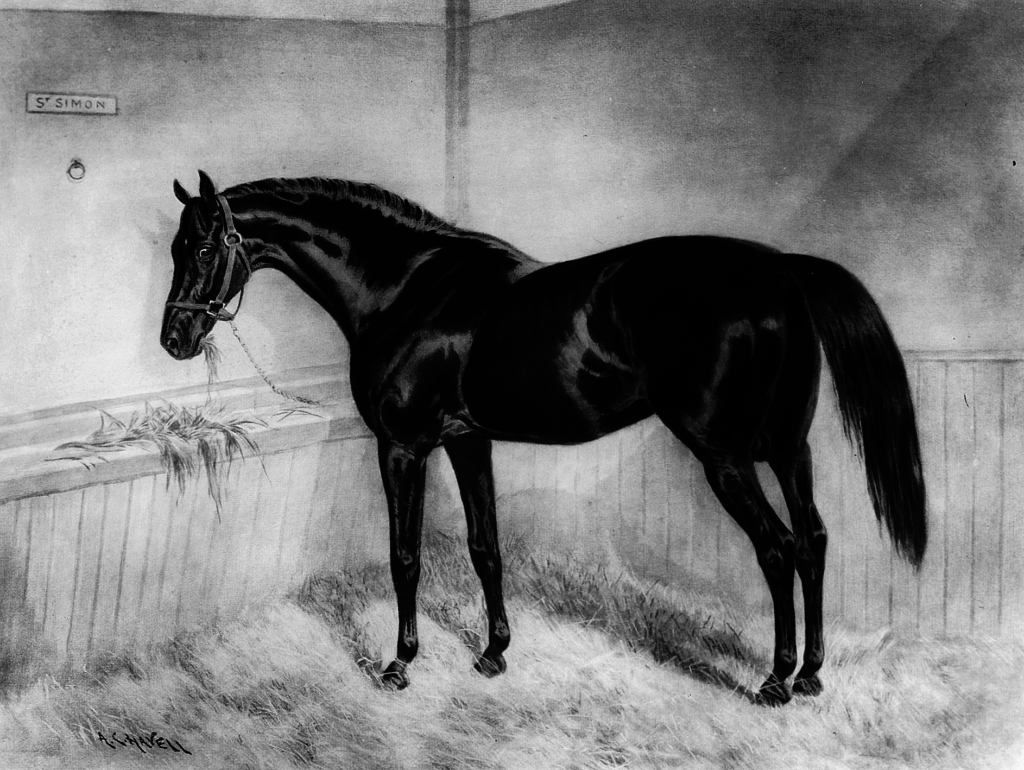
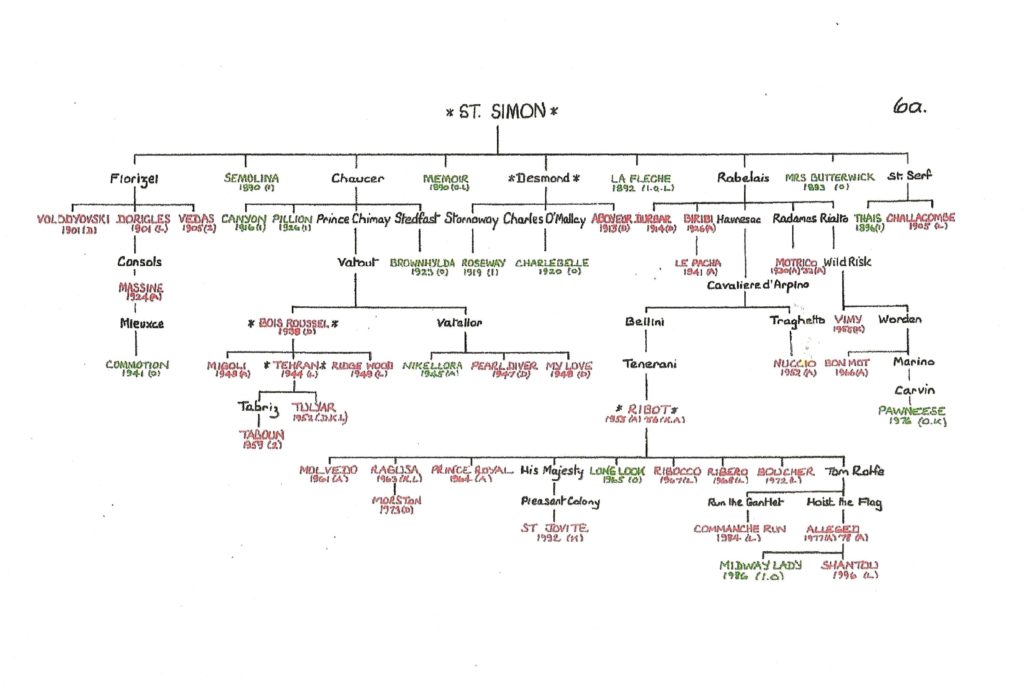
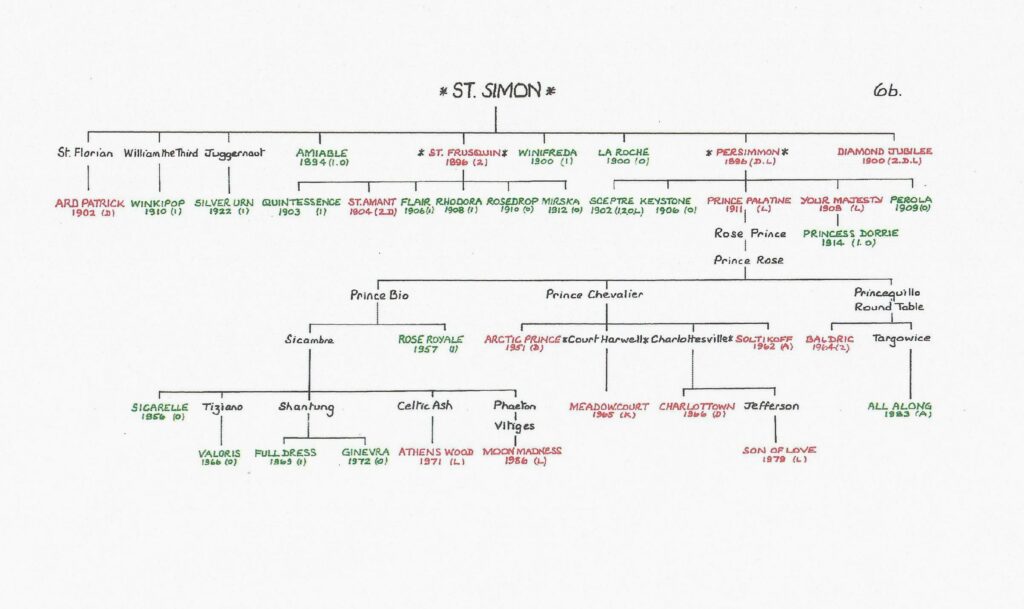

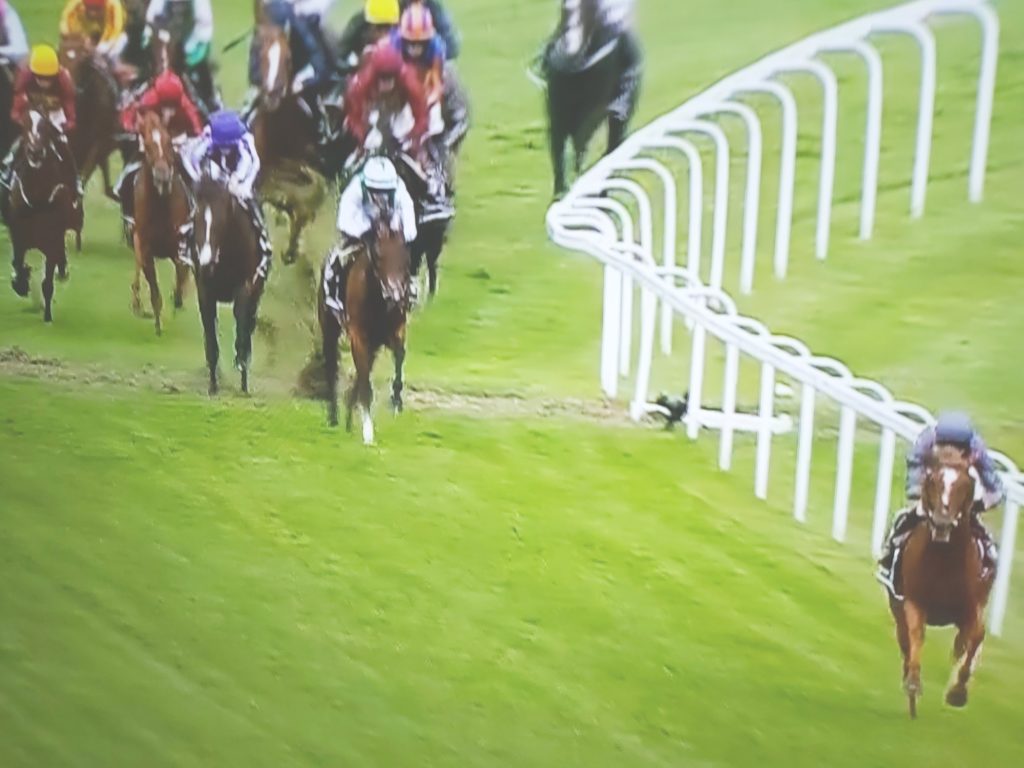
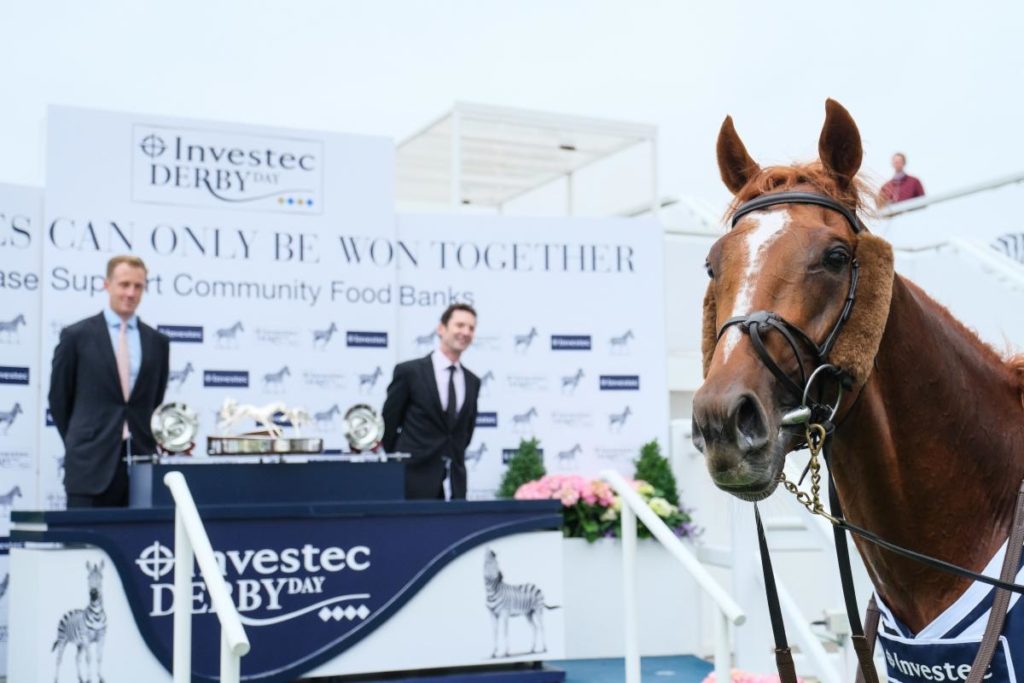
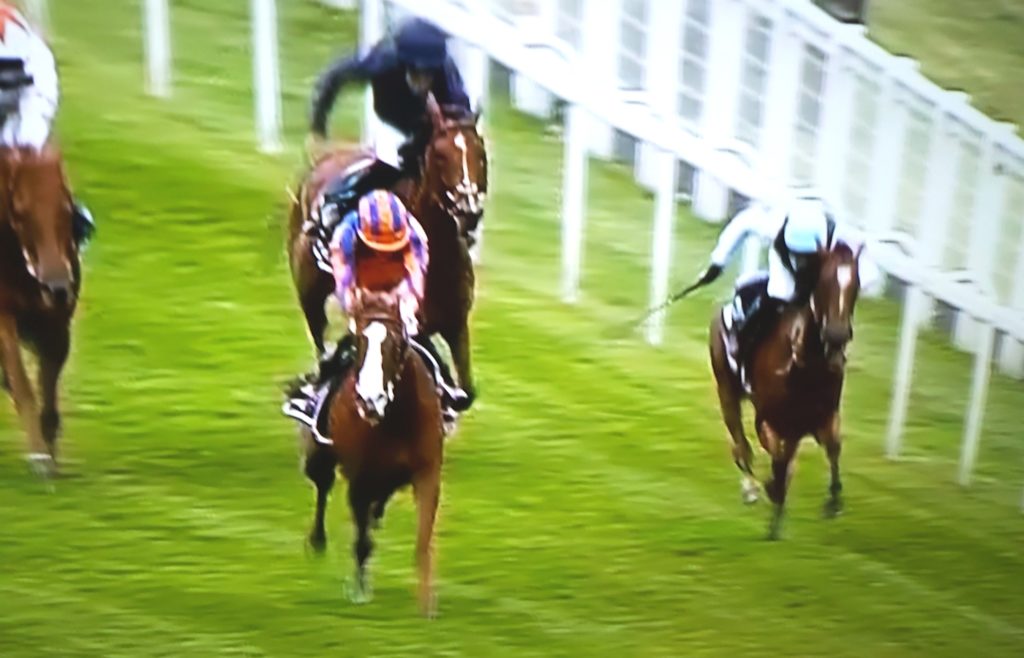
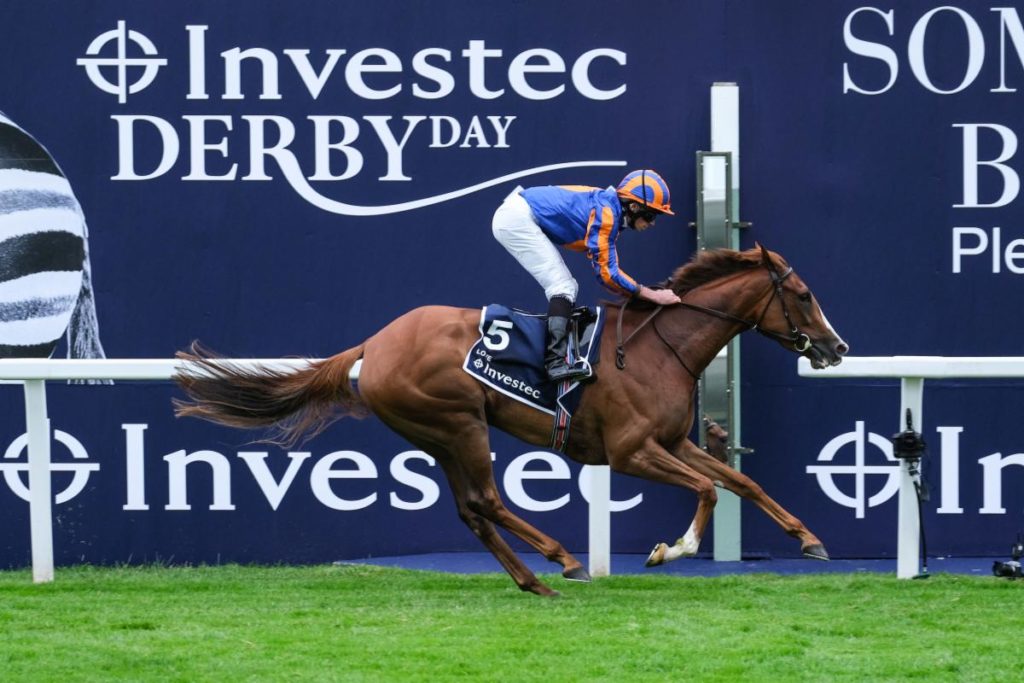 Love storms home setting a new record
Love storms home setting a new record